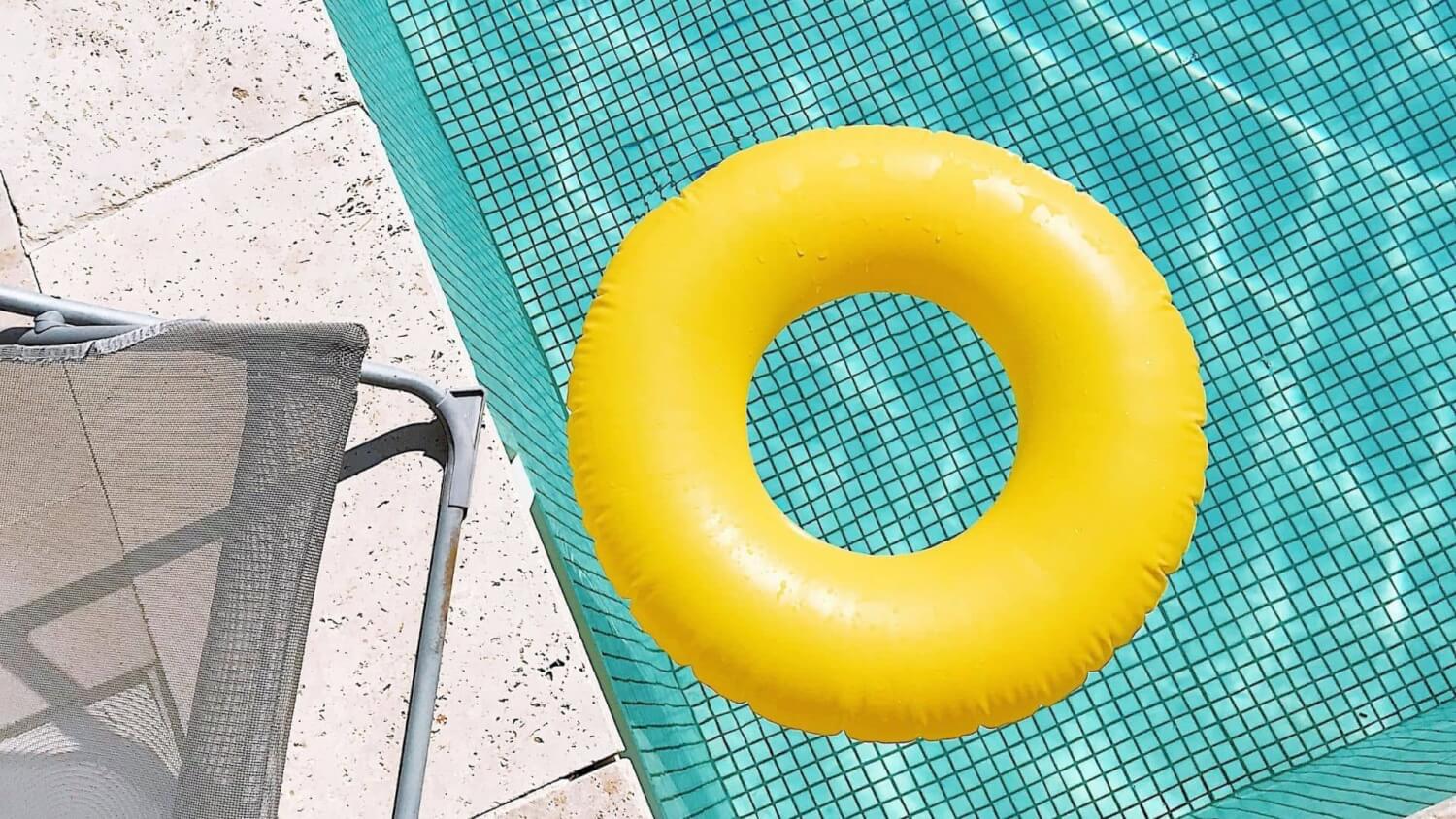Has your cement pool been looking a little funny recently? Does it have cracks and other surface oddities? Are you considering installing a concrete pool and wondering how to best finish it? Pool plaster is a great finish for cement pools that can create “a watertight seal and a pleasing texture for swimmer’s feet.” Read on to learn more about pool plaster, issues you might see with your pool’s plaster finish, and how to fix and prevent these issues from happening in the future.
WHAT IS POOL PLASTER?
Pool plaster is a compound that is used to finish the inside of cement pools. It is made up of cement mix and a silicate. Silicates are minerals with a specific makeup of silicon and oxygen, such as limestone. These two ingredients are often also mixed with other chemicals intended to strengthen the bond and finish. Pool plaster can also come in a variety of pool paint colors, which are created by the pigments within the mixtures.
Installation of pool plaster looks like a hand-mix at the site of installation, followed by an all-over coat of the pool in the material. It is a quick-drying material and creates a beautiful look to be enjoyed for years to come. There are, however, problems that can occur from poor installation, lack of maintenance, and even simply time.
COMMON POOL PLASTERING PROBLEMS
It might be easy to think that all issues with pool plaster are the same, however, they are not. A variety of different problems can be seen within pool plasters that are in need of repair, including the following:
- Etching and Scaling. This is when your pool becomes rough to the touch and has unhealthy mineral build up. It is mostly caused by poor pool chemical maintenance.
- Spalling is when your pool plaster becomes “flaky.” Pool plaster is finished by a smoothing process. When this is done incorrectly, you can see spalling.
- Fading is when your pool bottom and sides change color. This can be caused by time, poor chemical maintenance, or both.
- Many pools around trees experience staining to their pool plaster as a result of their proximity to falling leaves, pinecones, and other natural debris that can stain your plaster. In order to prevent this, vacuum this matter often or consider different landscaping.
ISSUES THAT CAUSE POOL PLASTER CRACKS
As mentioned, each sign of pool plaster issues can be attributed to one or more causes. There are several that happen over time and are uncontrollable, as well as several that are preventable. Some of these problems that cause these issues are:
- Unbalanced Pool Water Chemistry. When pool chemicals are off, all kinds of odd things can happen to your pool. Ensuring your pool’s entire chemistry, including the pH, can help ensure your pool’s plaster remains intact.
- Organic Matter or Foreign Elements. If you have a great deal of trees, bushes, or flowers that blow into your pool, you can tend to get staining and other issues with your pool plaster. Keeping these away from your pool and skimming to keep them out will also ensure the life of your pool’s finish.
- Shifting Ground Beneath the Pool. If the ground on which your pool is set has shifted or could shift, your pool could see cracking, among other damage to the finish and concrete.
- Painting the Plaster. Painting the plaster can ruin the plaster or cause damage, if not properly acid etched before painting.
HOW TO REPAIR POOL PLASTER
Though these issues can cause serious damage, there is often some remedy to these issues, including the following:
- Crazing is caused from excessive surface shrinkage cracking and often requires plastering to be replaced.
- Non-Structural Cracks. These cracks can be repaired with rinsing the crack, replastering within the crack, scraping the excess plaster, and letting it dry.
- Structural Cracks. These types of cracks can be fixed with staples. The staple will fuse both sides of the crack.
- Severe delamination requires pool resurfacing, which can range from parts of the pool all the way to total resurfacing of the entire pool.
LET AQUAGUARD HELP BRING YOUR POOL BACK TO LIFE
Though there are certainly lots of risks and considerations to have when selecting finishes and pool plasters for your pool, there are many things you can do to prevent and even fix such damage to your plaster. If you are looking for additional suggestions and consultation, please visit our website or call us to see how Aquaguard’s pool professionals can help you bring your pool back to life or create a beautiful new oasis.








